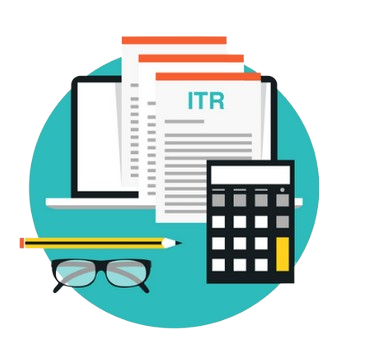Understanding Income Tax Returns (ITR)
Understanding Income Tax Returns (ITR)
Filing Income Tax Returns (ITR) is a crucial aspect of financial responsibility for individuals. In this chapter, we’ll delve into the fundamentals of filing ITR and provide a step-by-step guide with examples to simplify the process.


1.1 What is Income Tax Return (ITR)?
Income Tax Return (ITR) is a form used by individuals to declare their income, deductions, and taxes payable to the government. It serves as a record of the taxpayer’s income and tax liability for a particular financial year.
1.2 Importance of Filing ITR
Filing ITR is mandatory for individuals whose total income exceeds the prescribed threshold set by the government. It not only ensures compliance with tax laws but also enables individuals to claim refunds, avail tax benefits, and establish their financial credibility for loans and other financial transactions.
1.3 Types of ITR Forms
There are different types of ITR forms designed to cater to various categories of taxpayers based on their sources of income, such as salary, business/profession, capital gains, and other sources. The selection of the appropriate ITR form depends on the taxpayer’s income sources and nature of income.
Step-by-Step Guide to File ITR
Now, let’s walk through the step-by-step process of filing ITR for an individual with an example scenario.

2.1 Gather Required Documents
Before initiating the filing process, ensure you have all the necessary documents readily available, including:
- Form 16 (issued by the employer)
- Bank statements
- Investment proofs (e.g., LIC, PPF, ELSS)
- Rent receipts (if applicable)
- Details of other income sources (e.g., interest income, rental income)
2.2 Choose the Correct ITR Form
Select the appropriate ITR form based on your income sources and eligibility criteria. For example, if you have income from salary and interest, you may need to file ITR-1 (Sahaj) or ITR-2.
2.3 Download the ITR Form
Download the chosen ITR form from the Income Tax Department’s official website or authorized portals.
2.4 Fill in Personal Details
Fill in the required personal details accurately, including your name, address, PAN (Permanent Account Number), Aadhaar number (if applicable), and contact information.
2.5 Compute Total Income
Calculate your total income for the financial year by aggregating income from all sources, such as salary, interest, rental income, and capital gains.
2.6 Claim Deductions and Exemptions
Deduct eligible deductions under various sections of the Income Tax Act, such as Section 80C (investment in PF, PPF, ELSS), Section 80D (medical insurance premium), and Section 24 (home loan interest), to reduce your taxable income.
2.7 Calculate Tax Liability
Compute your tax liability based on the applicable tax slab rates for the financial year. You can use online calculators or consult a tax professional for accurate calculation.
2.8 Pay Taxes (if applicable)
If you have any tax payable after considering TDS (Tax Deducted at Source) and advance tax, ensure to pay the due amount before filing the ITR to avoid penalties and interest.
2.9 Fill in the ITR Form
Complete the ITR form by providing details of income, deductions, tax payments, and refunds (if any) in the respective sections as per the instructions provided.
2.10 Verify and Submit
Review the filled-in ITR form for accuracy and completeness. After verification, submit the form electronically using your Aadhaar OTP, EVC (Electronic Verification Code), or by sending a signed physical copy to the Centralized Processing Center (CPC).
2.11 Acknowledgment and Verification
Upon successful submission, you’ll receive an acknowledgment (ITR-V) via email or SMS. Verify the receipt and retain it for future reference.
Example Scenario:
Let’s consider an example of Mr. A, a salaried individual with additional income from interest on savings account and rent from property. Mr. A gathers all the necessary documents, selects ITR-2 form, computes his total income, claims deductions under Section 80C, 80D, and 24, calculates his tax liability, pays taxes (if any), fills in the ITR form, verifies, and submits it electronically. Mr. A receives the acknowledgment (ITR-V) and completes the filing process successfully.
By following this step-by-step guide and example scenario, individuals can file their Income Tax Returns accurately and efficiently, ensuring compliance with tax laws and maximizing tax benefits.
